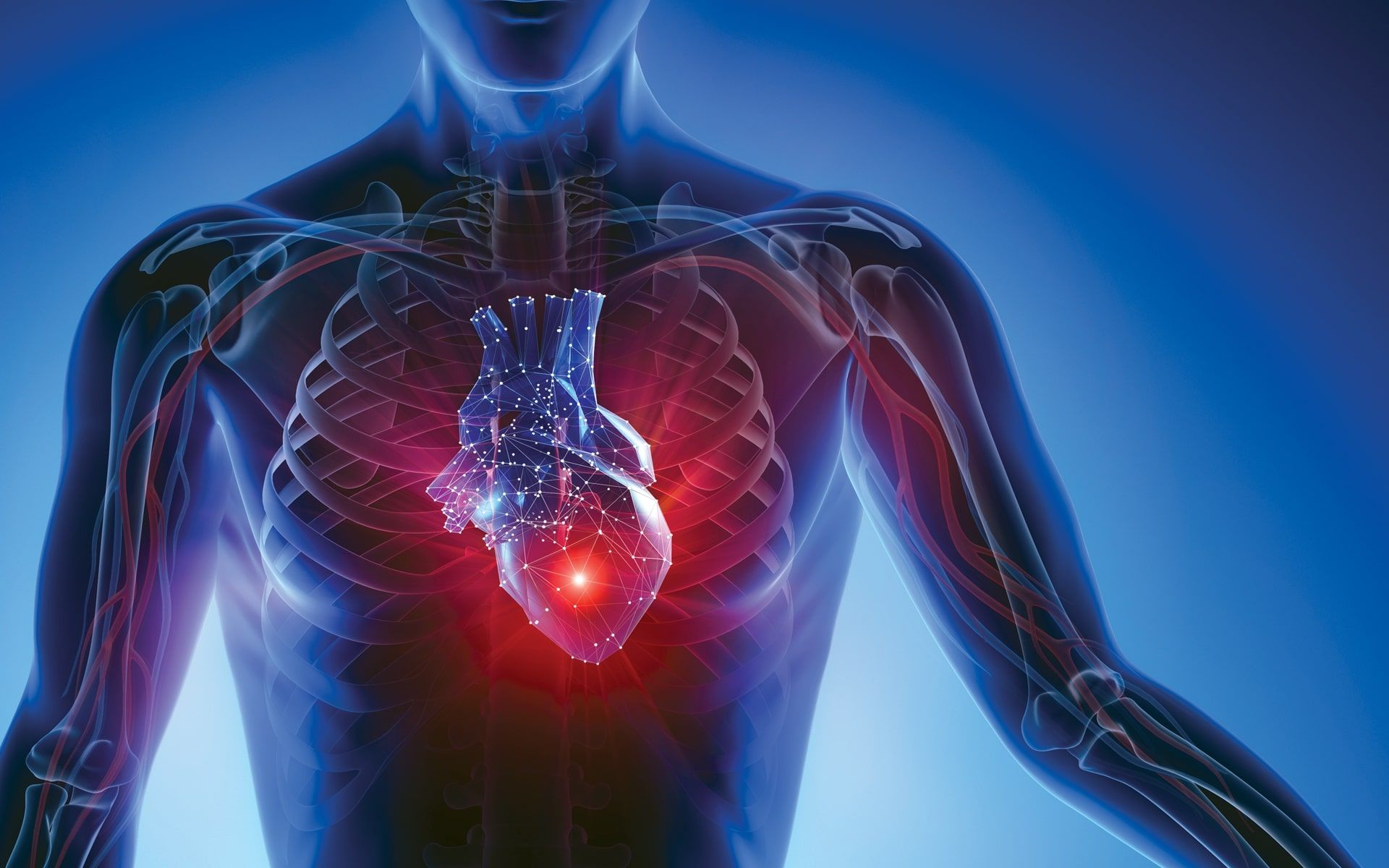The Heart Never Rests
- The heart’s muscles exhaust 11.6% of the body’s total oxygen consumption in order to maintain its own contractile activity, coming in 3rd after the liver (20.4%) and the brain (18.4%).
- Coronary artery disease is the leading cause of death worldwide, and especially in developed countries.
- The balance between contraction and expansion may remind of the concepts of Qabd (contraction) and Bast (expansion) in Sufism or Tzimtzum in Jewish mysticism, and how one truly feeds the other thus allowing for growth through this cycle of contraction and relaxation.

In This Article
-
The heart’s muscles exhaust 11.6% of the body’s total oxygen consumption in order to maintain its own contractile activity, coming in 3rd after the liver (20.4%) and the brain (18.4%).
-
Coronary artery disease is the leading cause of death worldwide, and especially in developed countries.
-
The balance between contraction and expansion may remind of the concepts of Qabd (contraction) and Bast (expansion) in Sufism or Tzimtzum in Jewish mysticism, and how one truly feeds the other thus allowing for growth through this cycle of contraction and relaxation.
“God contracts and expands.” (2:245)
The heart is a fairly small muscle that beats 100,000 times a day and produces roughly 115,000 Joules of energy, enough to boil a cup of water for some tea. Like a flowing river, deoxygenated blood travels from the right side of our body to the right side of our heart via valves and chambers until passing through our lungs, where each breath we take facilitates the oxygenation of every individual blood cell with 4 molecules of oxygen. The now oxygenated blood, continues to progress, never stopping, now through the left side of the heart, again passing through valves and chambers, eventually being pushed out to the rest of our body with the help of the left ventricle. The left ventricle is the thickest, largest, strongest, and most muscular part of the heart because it has the responsibility of pumping oxygenated blood through the aortic valve and aorta to the rest of our body. If this continual circulation is ever interrupted, it can lead to catastrophic outcomes.
There are several ways this flow can be interrupted, many of which happen before birth and require immediate surgery after delivery. Congenital heart defects (CHD) are some of the most common types of birth defects, but as medical care and treatment have advanced many of the babies that suffer from them usually end up living long and healthy lives. Treatment isn’t required while babies are in their mother’s womb, because the circulation of the heart is different before the baby takes its first breaths, and there is normally a mixing of oxygenated and deoxygenated blood. CHD can be mild, like a hole in the heart between two chambers that allows the mixing of oxygenated and deoxygenated blood. Ventricular septal defects and atrial septal defects (holes in the heart) are some of the most common forms of CHD. Sometimes these defects can be resolved on their own or may not be realized until much later in life, or they may require a “patch” repair if they are larger. VSDs and ASDs are associated with Down’s Syndrome, and maternal risk factors including diabetes, obesity, and smoking. Patent foramen ovale (a hole in the heart that fails to close) is found in up to 30% of the general population. It usually requires no treatment and isn’t discovered unless complications like a stroke occur later in life by having a blood clot form, requiring the blood to then travel through the hole, and then be shot up through the aorta into the brain. All babies are born with patent (open) ductus arteriosus - the ductus arteriosus is a fetal blood vessel that allows flow from the right heart to the aorta, necessary when the baby is in their mother’s womb, but incompatible for life after the baby is born. Within the first few days of life, this blood vessel should close and eventually transform into a ligament that helps tether the pulmonary artery and aorta to each other. If closure fails and the ductus arteriosus remains patent, a continuous machine-like murmur can be heard with a stethoscope, and treatment with indomethacin is started. Untreated, a PDA would result in cyanosis (blue/gray skin) and Eisenmenger Syndrome due to decreased oxygen delivery [1].
The heart’s responsibility is not only to provide oxygenated blood to the rest of the body but to also somehow feed itself. The heart’s muscles exhaust 11.6% of the body’s total oxygen consumption in order to maintain its own contractile activity, coming in 3rd after the liver (20.4%) and the brain (18.4%). During contraction or systole, the heart pumps at 120 mm Hg to provide blood through the aorta and arteries. During relaxation, or diastole, the heart expands and allows for blood to fill into its chambers and also flow through the coronary arteries. These coronary arteries are the arteries that will feed the heart itself. Thus, in order to feed itself the heart must relax and therefore allow its coronary arteries to expand and provide blood to itself. When the heart is contracting and providing blood to the rest of the organs it is too constricted to provide blood to itself. Since these branches are located within grooves of the heart, when the heart is systole the arteries are too constricted for blood flow due to increased tension. This is especially true regarding the arteries supplying the left ventricle since it is larger and more muscular – remember this is where the aorta will branch off, providing oxygenated blood to the rest of our body.
This balance between contraction and expansion may remind some readers of the concepts of Qabd (contraction) and Bast (expansion) in Sufism or Tzimtzum in Jewish mysticism, and how one truly feeds the other thus allowing for growth through this cycle of contraction and relaxation. Tzimtzum is used to explain the process of creation, a contraction of infinity happening to give birth to a finite universe [2]. The Sufi tradition is a personal journey described as “contraction and openness are mysterious ‘bargains’ that have been made without the will or intention of the traveler. The first one blocks his or her way; the second one gives him or her wings to fly to new heights [3].” What is perhaps most interesting is that our physical heart performs this contraction and expansion perfectly so long as we take care of it, whereas our spiritual heart can have lapses in this critical exercise. Maybe, if we understand how to take care of our physical heart, we will also find the answer to keeping our spiritual heart healthy. Prophet Muhammad, peace be upon him, emphasizes this connection as follows: “Verily, in the body is a piece of flesh which, if sound, the entire body is sound, and if corrupt, the entire body is corrupt. Truly, it is the heart.”
Some ways to take care of our physical hearts include incorporating more physical activity into our daily lives, eating less and healthy, and controlling our stress. Perhaps our spiritual health would also benefit from these and similar activities, including regular acts of worship, fasting, controlling our temper, and being kind to others. When we don’t take care of our physical heart, it begins to fail since oxygen ceases to be delivered to our heart and the electrical currents can no longer travel effectively, thus resulting in a heart attack.
Coronary artery disease is the leading cause of death worldwide, and especially in developed countries. The deadliest heart attack occurs if there is a blockage of the left anterior descending coronary artery, which is why it is tragically termed the “widow maker.” Beginning from adolescence, arteries begin to accumulate fatty streaks and progress to an atherosclerotic plaque. This plaque can lead to several disastrous complications such as follows:
- a narrowing or complete obstruction of an artery, impairing blood flow and leaving the heart thirsty for oxygen
- a stroke due to a blood clot caused by decreased movement, breaking off and flowing to the brain
- a weakening of the vessel wall leading to an aneurysm, the vessel bursting
For some patients, a heart attack becomes a wakeup call in order to make the many necessary lifestyle changes that are necessary in order to live a long and healthy life. However, 20% of patients will experience a second heart attack. As the heart gets weaker and weaker it can eventually develop cardiorenal syndrome, a complication that results from the heart being unable to pump effectively resulting in it getting backed up in the heart and the right side of the body. This increase in volume in the body is further exacerbated by the kidneys, which continue to retain fluids and thus cause the body to become overloaded. This leads to edema, or swelling, in the legs that can eventually progress to the lungs and cause congestive heart failure. As the kidneys try to ameliorate the fact that the heart is not pumping effectively, they ultimately worsen the situation leading to end-stage renal disease and stage D heart failure.
Of course, as with almost all medical conditions, these fatal results can be prevented much earlier with lifestyle changes, even before introducing medical intervention with prescription drugs or other procedures. These lifestyle modifications include moderate aerobic exercise at least 3 times a week, a diet rich in vegetables and low in fats, sugars, and carbohydrates, smoking and alcohol cessation, and weight reduction (which would come as a result of these modifications). It is also important for patients that are already dealing with hypertension, diabetes, and hyperlipidemia should keep them well-managed and controlled.
Maybe similarly, some simple lifestyle changes, such as putting aside a few minutes every day to reflect, can be the secret to keeping our spiritual heart healthy. Our heart must remain healthy to keep the rest of our body healthy. Considering the close relationship between our physical and spiritual heart, our spiritual heart must be kept healthy to keep the rest of our spiritual body healthy. Spiritually healthy individuals will further reinforce the health of our community, for Prophet Muhammad, peace be upon him, says, “The believers in their mutual kindness, compassion and sympathy are just like one body. When one of the limbs suffers, the whole body responds to it with wakefulness and fever.”
“As the whole of existence is in His grasp and at His free disposal, it is He Who directs and disposes of all things, from the heavens to the human heart... When God wills, He contracts a heart so tightly for what only He can provide that only He can satisfy it. By contrast, He expands and exhilarates it to such an extent that it needs nothing. Contraction is caused by God’s Majesty; openness is caused by His Grace. (Fethullah Gülen, Emerald Hills of the Heart).”









